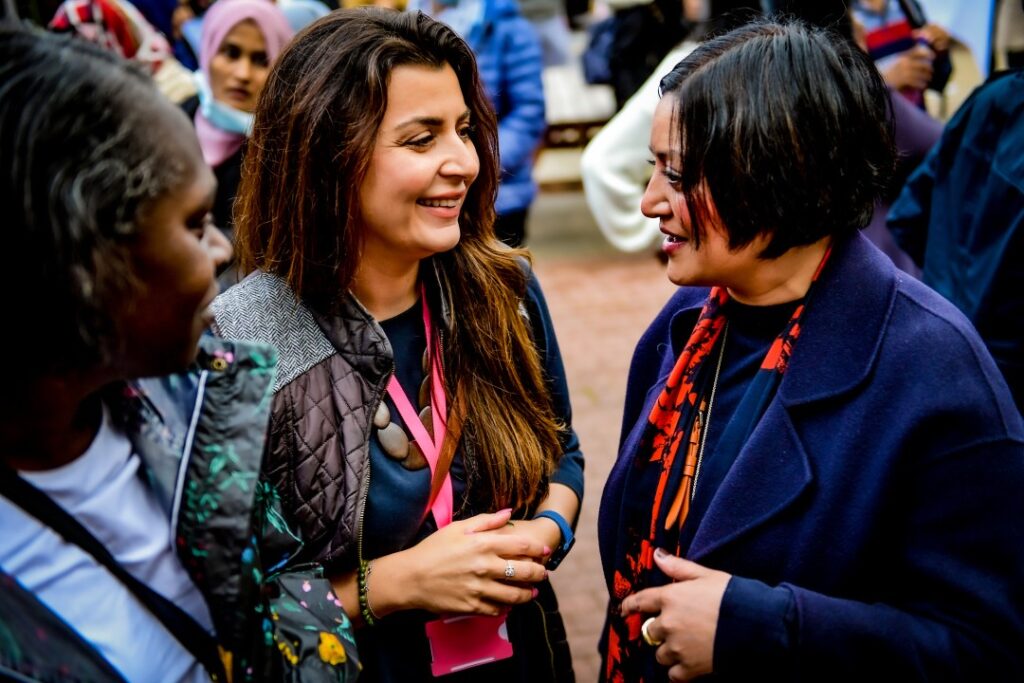
Culture-Led Placemaking: Reshaping Communities in the UK's New Towns Programme
The UK’s renewed focus on new towns presents a unique opportunity to embed culture at the heart of community development. Drawing from recent research and two decades of experience in cultural strategy, this blog explores how we can create vibrant, sustainable communities through culture-led placemaking.
Challenging the ‘Cultural Desert’ Myth
Often, places are erroneously referred to as ‘cultural deserts’, a term that overlooks the rich, albeit sometimes hidden, cultural assets within communities. I vividly recall when I first led Newham’s Creative People and Places bid, London Borough of Newham was frequently described as a cultural desert. However, when we successfully secured £1.2 million for Newham, we were clear: Newham isn’t a cultural desert; it’s that what is happening is not supported or recognised.
This experience underscores the importance of looking beyond surface-level assessments and engaging deeply with communities to uncover and nurture existing cultural assets. It’s not about bringing culture to supposedly ‘desert’ areas, but rather about recognising, supporting, and amplifying the cultural vibrancy that already exists in every community.
Place-Based Regeneration Funding
One of the key recommendations emerging from the work of Culture Commons is that place-based regeneration funding should be based on need, not competition. The Wales taxonomy model has been provided as an excellent example of this approach, offering a more equitable distribution of resources that considers the specific needs and potential of each area.
The Wales taxonomy model prioritises areas based on a comprehensive set of socio-economic indicators, ensuring that resources are directed to communities with the greatest need. By adopting a similar needs-based approach in culture-led regeneration, we can ensure that investments reach underserved areas and promote more inclusive cultural development.
Strong Leadership and Holistic Planning
These initiatives require strong leadership, with culture and creativity needing to be a key part of plans at all levels. It’s crucial to understand that the value of cultural initiatives extends far beyond economic arguments. They contribute significantly to pride of place and community wellbeing, factors that are essential for creating thriving, sustainable communities.
Current Landscape
There’s a growing recognition of the value cultural strategies bring to urban development. However, the Culture Commons research (https://devolution.culturecommons.uk/) highlights a persistent gap: the lack of long-term planning for sustainable operations. This gap presents both a challenge and an opportunity for local authorities and grassroots organisations. Below I have listed their Key Recommendations.
Grassroots Organisations and Local Workforce
At Creative Newham we’ve seen the effectiveness of grassroots organisations and local talent in driving authentic, community-connected placemaking efforts. These entities often possess deep understanding of local needs and aspirations, making them invaluable partners in cultural development.
The New Towns Programme and Cultural Infrastructure
The UK government’s renewed focus on new towns offers a unique opportunity for the creative and cultural sector. As a consortium of over 100 members, Creative Newham has advocated how cultural infrastructure can catalyse community development. It’s crucial that creative and cultural infrastructure – from public art installations to performance spaces and creative hubs – is integrated into the planning of these new developments from the outset.
Heritage-Focused Regeneration
My involvement with countless heritage programmes including Newham’s Heritage Month, has shown that heritage-focused initiatives can significantly boost community engagement. By showcasing local history and culture, these programmes foster a sense of pride and active participation in community development.
Key Recommendations for Sustainable Culture-Led Placemaking
- Devolved Decision-Making: Enable local authorities to develop tailored plans for their creative, cultural, and heritage ecosystem.
- Long-term Sustainability Planning: Implement operational models ensuring the longevity of cultural initiatives.
- Participatory Processes: Embed community involvement in decision-making to ensure relevance and inclusivity.
- Cross-Sector Collaboration: Foster partnerships between local authorities, cultural organisations, businesses, and residents.
- Skills Development: Invest in local talent to build a sustainable creative ecosystem.
- Heritage Integration: Incorporate local heritage into regeneration plans.
- Digital Innovation: Utilise technology to enhance access and create new forms of cultural engagement.
- Adaptive Reuse: Repurpose historical assets for contemporary cultural use.
- Monitoring and Evaluation: Implement systems to measure the impact of cultural initiatives.
- Funding Diversification: Explore innovative funding models to enhance resilience.
- Need-Based Funding: Implement place-based regeneration funding based on need, not competition, drawing inspiration from models like the Wales taxonomy.
- Strong Leadership: Ensure culture and creativity are key parts of plans at all levels.
The Role of Local Authorities and Regional Strategies
Local authorities are pivotal in implementing these recommendations. With devolved power and resources from central government, they can craft strategies that resonate with local communities. This requires a shift in approach to cultural policy and funding at the national level.
However, effective devolution extends beyond local authorities to encompass regional strategies. Regional bodies play a crucial role in coordinating efforts across multiple local authorities, ensuring coherence and avoiding duplication. They can also provide economies of scale for certain initiatives and represent collective interests at the national level.
The devolution of responsibilities should operate on a multi-tiered system:
- Local Level: Local authorities retain primary responsibility for crafting and implementing place-specific cultural strategies.
- Regional Level: Regional bodies coordinate across local authorities, identifying shared priorities and opportunities for collaboration. They can develop region-wide cultural strategies that complement and enhance local efforts.
- National Level: Central government provides the overarching policy framework and funding mechanisms while allowing for regional and local flexibility.
This tiered approach ensures that what happens locally can be effectively replicated and scaled at a regional level. Successful local initiatives can be shared as best practices across the region, while regional strategies can provide support and resources to bolster local efforts.
For example, a local authority might develop a successful community arts programme. The regional body could then facilitate the sharing of this model with other local authorities in the region, potentially scaling it up to a region-wide initiative. Simultaneously, the regional strategy might focus on larger-scale cultural infrastructure or events that benefit multiple local areas.
Effective devolution in this context requires clear delineation of responsibilities, robust communication channels, flexible funding mechanisms, and regular evaluation and adjustment of the model.
Conclusion
Culture-led placemaking is not just about economic benefits; it’s about fostering pride, enhancing wellbeing, and creating communities where people thrive. By adopting these recommendations and recognising the inherent cultural wealth in all areas, we can build truly sustainable and vibrant new towns. Let’s collaborate to ensure culture is at the forefront of our urban development strategies.
Image credit: Sanaz Amidi, CEO of Rosetta Arts & Producer of Newham Unlocked with Mayor Rokhsana Fiaz & Cllr Charlene McLean as , Green Street, London, October 2021, The Photo Team
#CultureLedRegeneration #Placemaking #UrbanDevelopment #CommunityEngagement #CreativeNewham #NewTowns #CulturalStrategy #SustainableCommunities #Walestaxonomymodel

